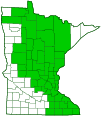eastern swamp saxifrage
(Micranthes pensylvanica)
Conservation • Wetland • Description • Habitat • Ecology • Use • Distribution • Taxonomy
Description |
||
Eastern swamp saxifrage is a 12″ to 36″ tall, erect, perennial forb that rises on a rosette of basal leaves and a single flowering stalk from a caudex and fleshy, translucent roots. The leaves are all basal and form a rosette. They are leathery, sparsely hairy, and spoon-shaped or lance-shaped. The larger ones are 4″ to 8″ long, and 1½″ to 3″ wide. They taper at the base to a short, broad, reddish-purple leaf stalk and taper to a point or are rounded at the tip. Young leaves are hairy. The upper surface of mature leaves is medium green and hairless or sparsely hairy. The lower surface is paler green and hairy or sparsely hairy. The margins have shallow, rounded teeth. The flowering stalk (scape) is erect, stout, unbranched, round in cross section, finely grooved, leafless, and densely covered with spreading, sticky hairs. The inflorescence is a pyramidal, branched cluster (panicle) of convex flower clusters (cymes) at the end of the scape. It is compact and dense at first, becoming loose and elongating as it matures, ultimately 6″ to 18″ long and 2″ to 6″ wide. The branches of the panicle are ascending to spreading and are subtended by a single linear, leaf-like bract. The flowers are ⅛″ to ¼″ wide. The 5 petals are white or greenish-white, narrow, 1 ⁄16″ to ⅛″ long, spreading, with 1 or 3 veins. There are 5 green sepals that are about the same length as the petals and are joined at the base. The sepals are bent backward when the flowers are fully expanded. There are 10 stamens with white to orangish-brown anthers. At the center of the flower is a large, pale green, cone-shaped hypanthium. The fruit is a pair of erect, beaked follicles with many seeds. |
||
Height |
||
12″ to 36″ |
||
Flower Color |
||
White or greenish-white |
||
Similar Species |
||
Early saxifrage (Micranthes virginiensis) is a much smaller plant, 4″ tall at first flowering to 16″ at maturity. The leaves are much smaller, ¾″ to 2″ long. The leaf margins are coarsely toothed. The sepals are spreading or ascending, not bent backward. The flowers are larger. The petals are ⅛″ to ¼″ long. In Minnesota it is found only in the northeast corner and in Lake of the Woods County. Edible valerian (Valeriana edulis var. ciliata) has leafy flowering stems. Fen grass of Parnassus (Parnassia glauca) has a slender, hairless scape. The inflorescence is a solitary flower at the end of the scape. The flowers are much larger, up to 1″ wide. The petals are white with many greenish veins. There are only 5 stamens. |
||
Habitat |
||
Wet to moderate moisture. Meadows, woods, bogs. |
||
Ecology |
||
Flowering |
||
May to June |
||
Pests and Diseases |
||
|
||
Use |
||
|
||
Distribution |
||||
|
Sources |
|||
| 4/24/2023 | ||||
Nativity |
||||
Native |
||||
Occurrence |
||||
Uncommon |
||||
Taxonomy |
|||
| Kingdom | Plantae (Plants) | ||
| Division | Tracheophyta (Vascular Plants) | ||
| Subdivision | Spermatophytina (Seed Plants) | ||
| Class | Magnoliopsida (Dicots) | ||
| Superorder | Saxifraganae | ||
Order |
Saxifragales (saxifrages, stonecrops, and allies) | ||
Family |
Saxifragaceae (saxifrage) | ||
| Tribe | Micrantheae (early saxifrage) | ||
| Genus | Micranthes (early saxifrages) | ||
| Section | Micranthes | ||
Synonyms |
|||
Saxifraga forbesii Saxifraga pensylvanica Saxifraga pensylvanica var. forbesii Saxifraga pensylvanica ssp. interior Saxifraga pensylvanica var. purpuripetala Saxifraga pensylvanica ssp. tenuirostrata |
|||
Common Names |
|||
eastern swamp saxifrage Forbe’s saxifrage swamp saxifrage |
|||
Glossary
Beak
A comparatively short and stout, narrow or prolonged tip on a thickened organ, as on some fruits and seeds.
Bract
Modified leaf at the base of a flower stalk, flower cluster, or inflorescence.
Caudex
A short, thickened, woody, persistent enlargement of the stem, at or below ground level, used for water storage.
Cyme
A branched, flat-topped or convex flower cluster in which the terminal flower opens first and the outermost flowers open last.
Follicle
A dry fruit formed from a single carpel, containing many seeds, that opens at maturity along the seed-bearing seam.
Hypanthium
A cup-like tubular structure of a flower formed from the fused bases of sepals, petals, and stamens, that surrounds the pistil. Its presence is diagnostic of many families, including Rose, Gooseberry, and Pea.
Linear
Long, straight, and narrow, with more or less parallel sides, like a blade of grass.
Panicle
A pyramidal inflorescence with a main stem and branches. Flowers on the lower, longer branches mature earlier than those on the shorter, upper ones.
Scape
An erect, leafless stalk growing from the rootstock and supporting a flower or a flower cluster.
Sepal
An outer floral leaf, usually green but sometimes colored, at the base of a flower.
Visitor Photos |
|||||
Share your photo of this plant. |
|||||
| This button not working for you? Simply email us at info@MinnesotaSeasons.com. Attach one or more photos and, if you like, a caption. |
|||||
|
|||||
MinnesotaSeasons.com Photos |
|||||
Plant |
|||||
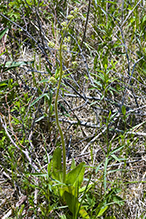 |
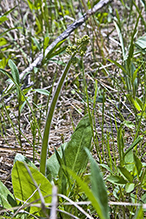 |
||||
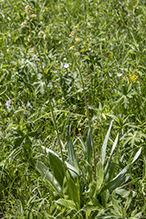 |
|||||
Basal rosette |
|||||
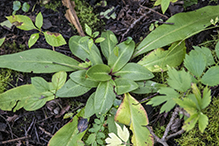 |
|||||
Leaves |
|||||
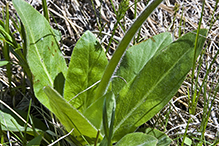 |
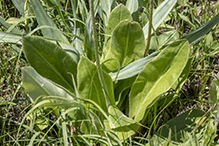 |
||||
Inflorescence |
|||||
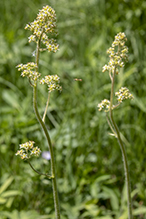 |
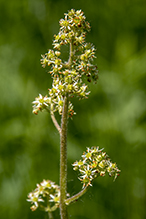 |
||||
Flowers |
|||||
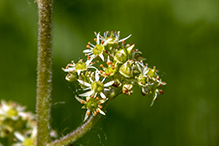 |
|||||

Slideshows |
||

Visitor Videos |
|||
Share your video of this plant. |
|||
| This button not working for you? Simply email us at info@MinnesotaSeasons.com. Attach a video, a YouTube link, or a cloud storage link. |
|||
Other Videos |
|||

Visitor Sightings |
|||||
Report a sighting of this plant. |
|||||
| This button not working for you? Simply email us at info@MinnesotaSeasons.com. Be sure to include a location. |
|||||
|
|||||
MinnesotaSeasons.com Sightings |
|||||

|
Created: Last Updated: © MinnesotaSeasons.com. All rights reserved. |
